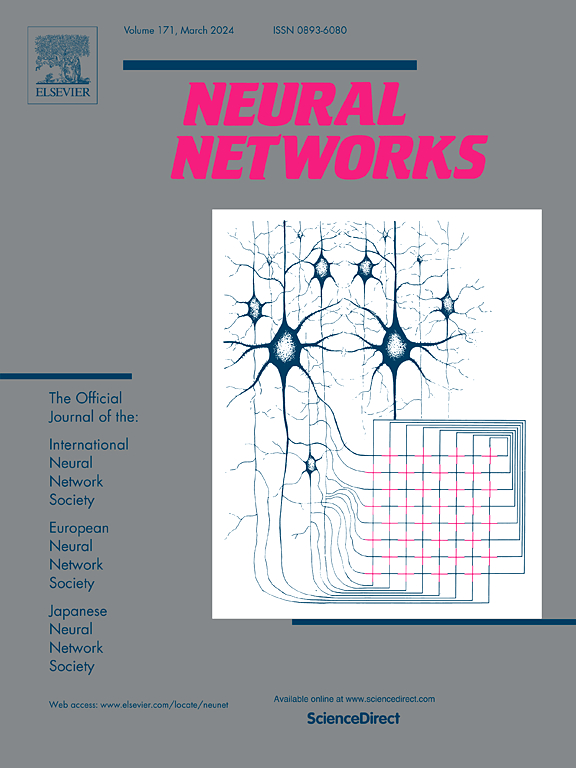Multi-stage network for single image deblurring based on dual-domain window mamba
IF 6
1区 计算机科学
Q1 COMPUTER SCIENCE, ARTIFICIAL INTELLIGENCE
引用次数: 0
Abstract
Multi-stage methods have been proven effective and widely used in image deblurring research. These methods, usually designed based on Convolutional Neural Networks (CNNs) or Vision Transformers (ViTs), have limitations, including the inability to capture global contextual information and a quadratic increase in computational complexity as image resolution. Additionally, although current methods have incorporated frequency domain information, they do not sufficiently explore the interrelationships of different frequencies. To address these issues, we proposed a Multi-Stage Visual Dual-Domain Window Mamba (DDWMamba) approach to realize image deblurring, leveraging the benefits of state space models (SSMs) for image data. First, to achieve better deblurring effects, we used a multi-stage design approach in which each stage maintains the details and global information of the original resolution image. Second, we proposed a DDWMamba Block, which includes a Spatial Window Visual Mamba and a Frequency Window Visual Mamba, aiming to fully explore the correlations between different pixels in both the spatial and frequency domains. Finally, to implement a coarse-to-fine design approach in the multi-stage method and reduce model complexity, we set a window operation with different window sizes for each stage. DDWMamba is extensively evaluated on several benchmark datasets, and the model achieves superior performance compared to existing state-of-the-art deblurring methods.
基于双域窗曼巴的单幅图像去模糊多级网络
多阶段方法在图像去模糊研究中得到了广泛的应用。这些方法通常是基于卷积神经网络(cnn)或视觉变换(ViTs)设计的,它们有局限性,包括无法捕获全局上下文信息,并且随着图像分辨率的增加,计算复杂度会增加二次。此外,虽然目前的方法已经纳入了频域信息,但它们没有充分探索不同频率之间的相互关系。为了解决这些问题,我们提出了一种多阶段视觉双域窗口曼巴(DDWMamba)方法来实现图像去模糊,利用图像数据的状态空间模型(ssm)的优势。首先,为了获得更好的去模糊效果,我们采用了多阶段设计方法,每个阶段都保持原始分辨率图像的细节和全局信息。其次,我们提出了一个包含空间窗视觉曼巴和频率窗视觉曼巴的DDWMamba块,旨在充分探索不同像素在空间和频率域的相关性。最后,为了在多阶段方法中实现从粗到精的设计方法并降低模型复杂度,我们在每个阶段设置了不同窗口大小的窗口操作。DDWMamba在几个基准数据集上进行了广泛的评估,与现有的最先进的去模糊方法相比,该模型具有优越的性能。
本文章由计算机程序翻译,如有差异,请以英文原文为准。
求助全文
约1分钟内获得全文
求助全文
来源期刊

Neural Networks
工程技术-计算机:人工智能
CiteScore
13.90
自引率
7.70%
发文量
425
审稿时长
67 days
期刊介绍:
Neural Networks is a platform that aims to foster an international community of scholars and practitioners interested in neural networks, deep learning, and other approaches to artificial intelligence and machine learning. Our journal invites submissions covering various aspects of neural networks research, from computational neuroscience and cognitive modeling to mathematical analyses and engineering applications. By providing a forum for interdisciplinary discussions between biology and technology, we aim to encourage the development of biologically-inspired artificial intelligence.
 求助内容:
求助内容: 应助结果提醒方式:
应助结果提醒方式:


